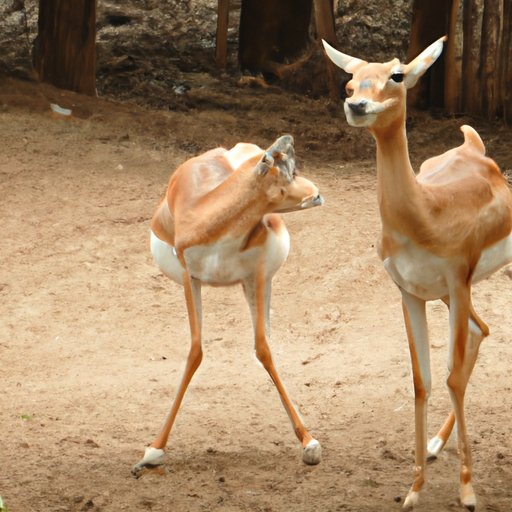Introduction
Humans have long been fascinated by the idea of animals dancing. We have seen our beloved pets in moments that seem to show them swaying to a rhythm or leaping with joy, but is this really dancing? This article seeks to explore the evidence for whether animals do indeed dance, examining different types of animal motion and how they differ between species, as well as what research tells us about animal dancing.
Exploring the Evidence: Do Animals Dance?
In order to answer this question, it is important to first consider what we mean when we say “dancing”. Generally speaking, dancing is a form of physical expression which involves rhythmic movements of the body in time to music or other forms of sound. It is often associated with joy and celebration, and while some people may argue that animals are not capable of experiencing such emotions, there is no denying that many animals engage in activities similar to what we call dancing.
When observing animals, it is easy to see that they move in ways that can be interpreted as dancing. From birds bobbing their heads up and down to cats twirling around in circles, there are countless examples of animals engaging in movements that could be considered dancing. But is this just instinctive behavior, or is it something more?
To find out, we must look to scientific evidence. Studies have shown that some animals, such as parrots, can learn to dance in response to music or other auditory cues. Parrots have been trained to move their bodies in time with the beat of the music, demonstrating an ability to recognize and respond to sound patterns. Other species, such as dolphins and monkeys, have also been observed engaging in rhythmic motions that could be considered dancing.
Investigating Animal Movement: Is it Dancing or Something Else?
It is clear that some animals demonstrate behaviors that appear to be dancing, but it is important to note that not all animal movement is necessarily dancing. To determine if an animal is truly dancing, it is necessary to analyze its movements. Does the animal move in a consistent pattern? Does it change its movements in response to sound or other stimuli? Does it move with a sense of joy or abandon? These are all questions that must be asked in order to determine if an animal is truly dancing.
A Closer Look at Animal Motion: What is Dancing and What Isn’t?
When looking at animal movement, it is important to consider the type of motion being exhibited. For example, some animals may move in a repetitive manner, such as a cat chasing its tail, but this does not necessarily constitute dancing. Similarly, animals may move in a seemingly random or erratic manner, such as a bird flapping its wings, but this too does not constitute dancing. In order to identify true dancing, it is important to look for movements that are both rhythmic and purposeful.
Do Different Species Dance Differently?
As mentioned earlier, different species of animals may exhibit different types of movement. While some animals may appear to be dancing, it is important to note that each species has its own unique way of expressing itself. For example, some species may move in a fluid and graceful manner, while others may move in a more jerky and energetic manner. Additionally, some species may be more prone to dancing than others, depending on their natural instincts and behaviors.
The Science of Animal Movement: What We Know About Animal Dancing
While there is still much to learn about animal movement and behavior, scientists have studied the topic extensively. Research has shown that some animals, such as parrots, can learn to recognize and respond to sound patterns, suggesting that they may be able to dance in some capacity. Additionally, studies have found that certain species, such as dolphins, are more likely to engage in rhythmic movements than others, suggesting that they may be more naturally inclined to dance.
Conclusion
The evidence suggests that animals do indeed dance, though the degree to which they do so varies from species to species. While some animals, such as parrots and dolphins, appear to be more naturally inclined to dance than others, all animals have the capacity to express themselves through movement. For those wishing to observe animal dancing, it is important to remember that different species will dance differently, and that even within a single species, individual animals may move in different ways. Ultimately, the study of animal movement provides us with valuable insight into the complex world of animal behavior.
(Note: Is this article not meeting your expectations? Do you have knowledge or insights to share? Unlock new opportunities and expand your reach by joining our authors team. Click Registration to join us and share your expertise with our readers.)
